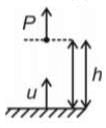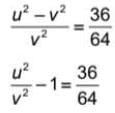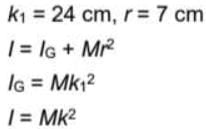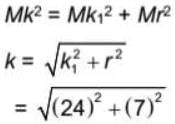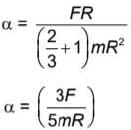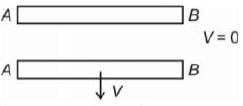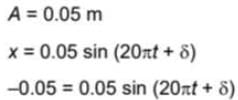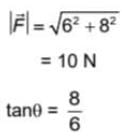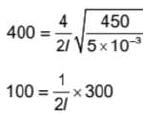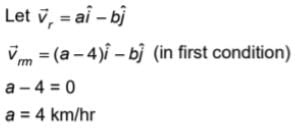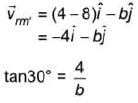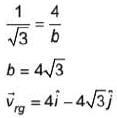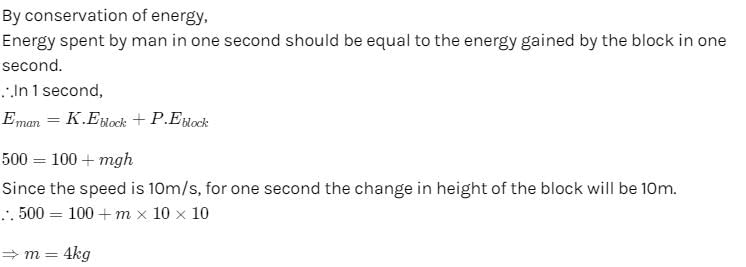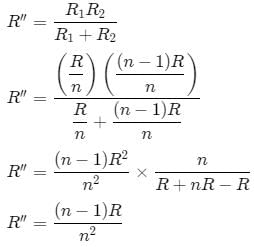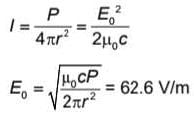NEET Practice Test - 16 - NEET MCQ
30 Questions MCQ Test - NEET Practice Test - 16
A ball falls vertically onto a floor, with momentum P, then bounces repeatedly. The coefficient of restitution is 1/2, the total momentum imparted by the ball to the floor is:
A body is projected vertically up with a certain velocity. At point P in its path, the ratio of its potential energy to kinetic energy is 36:64. The ratio of the velocity of projection to the velocity at ‘P’ is:
| 1 Crore+ students have signed up on EduRev. Have you? Download the App |
The radius of gyration of body about the centre of mass is 24 cm. Then radius of gyration of body about an axis parallel to the axis passing through the centre of mass and at a distance 7 cm from the centre of mass is:
A spherical shell of mass m and radius R is pulled on a horizontal plane by a horizontal force F acting on its centre of mass. If the shell is rolling without slipping, then the angular acceleration of the spherical shell will be:
A uniform rod AB of mass ’m’ length ‘2a’ is allowed to fall under gravity with AB in the horizontal position. When the speed of the rod is ‘V’ suddenly the end ‘A’ is fixed. The angular velocity of the rod with which it begins to rotate will be:
The amplitude of vibration of a particle is given by  where a0, a, b and c are positive. The condition for single resonant frequency will be:
where a0, a, b and c are positive. The condition for single resonant frequency will be:
A particle performing SHM with frequency 10 Hz and amplitude 5 cm is initially in the left extreme position. The equation of its displacement will be (x is in meter):
The gravitational field at some point in space is  The force exerted on a 2 kg mass placed at a point is:
The force exerted on a 2 kg mass placed at a point is:
A wire having a linear mass density of 5.0 x 10-3 kg/m is stretched between two rigid supports with tension of 450 N. The wire resonates at a frequency of 400 Hz. The next higher frequency at which the wire resonates is 500 Hz. The length of the wire will be:
If V is speed, r is radius and g is acceleration due to gravity, which of the following is dimensionless?
For a man running horizontally along east at speed of 4 km/hr, rain appears to fall vertically. If he doubles his speed the rain appears to hit him at an angle at 30o with vertical. The original speed and direction of rain will be:
A rigid rod is placed against the wall as shown in the figure. When its velocity of the lower end is 10m/s and its base makes an angle α=60 o with horizontal, then the vertical velocity of its end B will be:
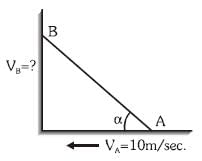
On the horizontal surface of a truck, a block of mass 2 kg is placed and the coefficient of friction between the block and surface is (μs = 0.6) truck starts moving with an acceleration 4 m/s2 , the frictional force on the block will be? (g = 10 m/s2)
A man is supplying an instantaneous power of 500 J/s to a massless string by pulling it at an instantaneous speed of 10 m/s as shown. It is known that the kinetic energy of the block is increasing at a rate of 100 J/s at that instant. Then the mass of the block is:
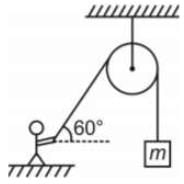
What is a necessary condition for a reaction to be spontaneous at all temperatures?
Each side of regular polygon of n sides has a resistance R. The equivalent resistance between any two adjacent vertices is:
When a lens of power P (in air) made of material of refractive index 3 is dipped in a liquid of refractive index 4, the new power of lens is:
A point source of electromagnetic radiation has an average power output of 800 W. The maximum value of electric field at a distance 3.5 m from source will be:
Two plates (of area: a each) given charges + q1 and + q2 (q2 < q1) are brought closer to form a capacitor of capacitance C. The potential difference across the plates is:
A and B are inputs to a logic gate as shown in the figure.

For the given set of inputs and corresponding output data identify the logic gate.

A 220 V ac supply is connected between the two points A and B as shown in the figure. The output waveform (qualitative) across the diode is:

Which of the following is correct when NPN transistor is used as an amplifier?
Consider the statements given below:
1. At absolute zero temperature, an intrinsic semiconductor acts as an insulator.
2. The Fermi level in an intrinsic semiconductor lies between the valence band and conduction band.
Choose the correct statement(s).
In a Zener regulated power supply, a Zener diode with Vz = 6.0 V , Iz = 5IL is used for regulation. The load current is to be 4.0 mA and the unregulated input is 10 V, as shown in the figure. The value of series resistance Rs required will be:
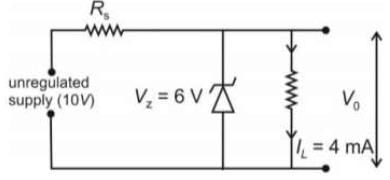
What happens when you heat china having some dark paintings engraved on it at 1000°C and then examine it in a dark room immediately?
A spring-block system undergoes simple harmonic motion on a smooth horizontal surface. The block is now given some positive charge and a uniform horizontal electric field to the right is switched on, as a result:

The latent heat of vaporisation of water is more than latent heat of fusion of ice, because:
The emissive power of a black body at T = 300 K is 100 W/m2. Consider a body B of area A = 10 m2, coefficient of reflectivity r = 0.3 and absorptivity a = 0.2. If its temperature is 300 K then mark out the correct statement.
For the indicator diagram given below, correct statement is:








